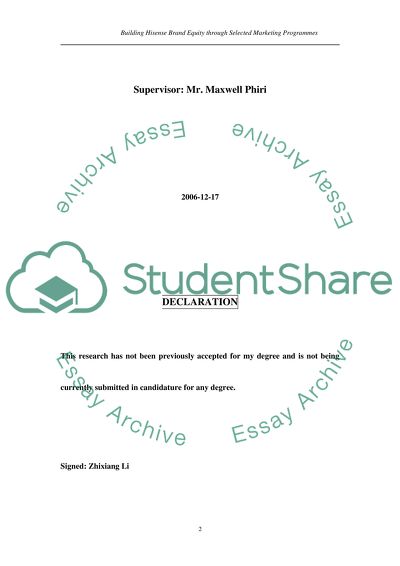Retrieved from https://studentshare.org/miscellaneous/1542371-building-hisense-brand-equity-through-selected-marketing-programmes-a-study-on-the-relationship-among-brand-equity-marketing-mix-elements-and-consumer-respons
https://studentshare.org/miscellaneous/1542371-building-hisense-brand-equity-through-selected-marketing-programmes-a-study-on-the-relationship-among-brand-equity-marketing-mix-elements-and-consumer-respons.


